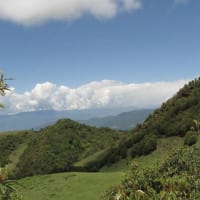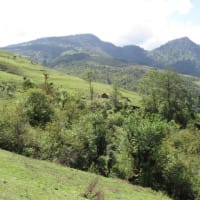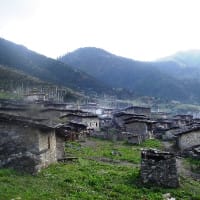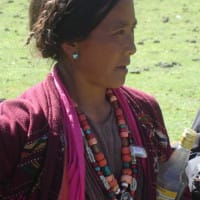Merak Sakteng Villages
Merak & Sakteng Villages – the land of Brokpas
The people of Merak and Sakteng have their ancestral root from Tshona region in southern Tibet. Around 15th century in Tshona village in Tibet lived a wicked Chieftain, who ordered his subjects to bring down the mountain that was obstructing sunshine on his palace. The people toiled day and night for years to bring down the mountain but were barely able to make a dent on it. One fine day, a lady known as Aum Jomo suggested that instead of taking this impossible task, it would be much easier to bring down the life of one person. So the chieftain was beheaded in one of the festive occasions. Later people left the village with all their belongings, scriptures, yaks and sheeps. Aum Jomo and Lama Jarepa led the people further south looking for a new home. After travelling for several months on the road, crossing snow-capped mountains, rivers and through dense forest, they arrived at the foothill of a very high mountain pass. The stronger and younger people along with the animals managed to climb over the pass and settle in a beautiful meadow covered valley, with shrubs and rhododendron forests. They set the shrubs on fire and made that valley as their new home, which is now Merak meaning “set on fire”.

The people of Merak and Sakteng are known as the Brokpa (highlander) to the people living on the lowlands. The Brokpas have maintained their unique traditions and customs. The people of Merak are typically well built and taller than their colleagues from Sakteng. Like the people from Laya, Lingshi and Lunana, they also live a semi nomadic lifestyle, primarily depending on Yaks for their livelihood.

The houses are built of stones with very small windows and in most cases the houses are one storied only. In Merak the custom of polyandry is practised, and it is always the same brothers who share the wife.Merak Sakten Father and daughters

The rough leather also provides protection while herding the yaks. Underneath they wear knee length shorts known as Kanggo, usually cream or white color with slits at the sides from the waist kept in place by two leather strings. But this sexy shorts are however getting replaced popularly by nylon track pants. The men carry a dragger tucked in their belt at the waist level. The Brokpa women keep long hair tied up in plaits with colourful ribbons. They wear pink and white striped raw silk dress on top covering till waist length and red striped similar to skirt with some animal and flower motifs woven on it. Women wear additional black wool shawl during the winter to keep warm. Brokpa women are excellent weavers and they love jewelleries as most of them wear traditional jewelleries like corals inter spread with cats eye, zee and semi precious stones around the neck.
Merak Sakteng YaksAnother interesting tradition of Brokpas is a unique relationship between them and the lowland village people known as Drukkor, The Grain Journey. When winter sets in and frost start covering their pastures where their yaks graze, the Brokpas from the Merak and Sakteng start packing things to leave to the lowlands of Trashigang district to trade with the villagers there and graze their yaks in available pastures. Most of the Brokpa family have a host family Nepo in the lowland villages with whom they have close trading and social relationship as well. They stay in Nepo’s house for weeks. They sleep over, eat and drink together as one family member. They barter yak butter and cheese with corn and other grains. One of the prized Brokpa product is a fermented cheese. They put fresh cheese into leather bags and leave it to ferment. The longer it is kept the better it taste. Actually it taste better than it smells. They will collect themselves for the previous years trade or the Nepo will visit them during summer with the bartered products, bringing in grains, vegetables, salt and other necessary items.
The valleys of Brokpas is inseparable with the existence of Yeti, or Abominable Snowman. As it is believed and many stories are told about the existence of this elusive creature, the Brokpas’ name for Yeti is Megay. Most of the stories are told by the yak herders who have encountered the Yeti, while searching for their lost yaks in deep forests in isolated areas at high altitudes. Some yak herders have said that it is white in color and others said it is light reddish. The footprint is one foot long and the distance is about four foot between them. They say that it emits a strong odour like that of garlic and it feeds mainly on bamboo shrubs. They believe that should one see him, it should be treated with respect for it is believed to be the guardian deity of these remote areas. It does not attack humans unless it is provoked. Some tried to follow the footprints but in vain and so far this creature has continued to elude us.
Merak & Sakteng Village Culture and Nature Treks Itineraries >>
Click on a thumbnail below to view the Merak Sakteng Image


 +1 612 869 4949
+1 612 869 4949







































